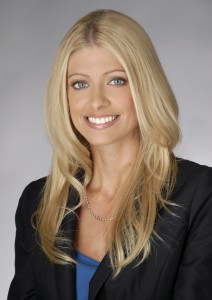The webinar, “7 Things Every Marketer Should Be Doing on LinkedIn, Paid & Free,” discussed the most useful LinkedIn features for marketers, as well as how to take advantage of its targeted ad capabilities. Panelists included Lana Khavinson, Senior Product Marketing Manager at LinkedIn and Brian Carter, author of the new book LinkedIn for Business: How Advertisers, Marketers and Salespeople Get Leads, Sales and Profits from LinkedIn.
As we know, prospective clients can’t engage your services if they don’t know who you are. LinkedIn provides a range of ways to get your name out there, including online ads, emails to group members and the ability to post questions and answers. But none of these tactics can truly be effective if you aren’t putting in place a measurement system, which the panelists referred to as AIDA – Awareness, Interest, Desire, Action. Tracking these from the outset will allow you to measure how effective your marketing campaign is. According to LinkedIn, while their ads are more expensive than Facebook, for example, their targeted ad campaigns have a better ROI.
Two options for advertising on LinkedIn are:
–LinkedIn Marketing Solutions: LinkedIn provides an account manager to manage your campaign based on a set monthly charge.
–Self-service: As you can infer, you are in charge of managing your own campaign creation and management, as well as tracking analytics.
In terms of selecting your target profile/audience, LinkedIn allows you to be very specific, e.g., female, chief executive bankers in California. But LinkedIn warns if the group is too small – less than 1,000 targets – you’ll need to eliminate a specification. LinkedIn’s pay-per-click bidding is similar to Facebook or Google, and you can choose to run an ongoing campaign or set an end date.
The features that drive the most traffic to a firm’s website from LinkedIn are your individual profile, group pages, and then the company page. The following are elements of LinkedIn that can generate more leads:
–Company page: Showcase your brand, expertise and specialties. Pay attention to keywords you’re including in your description as this page can greatly increase search engine optimization.
–Status Update Feed: Create your individual/company page, get followers and then engage. Incorporate images, links and videos to further attract visitors. This demonstrates your expertise while adding value. You can also target your status updates (at least 100 followers). For instance, if you want to promote a presentation you’re giving, you can segment to just California-based contacts, as well as titles, etc. LinkedIn encourages posting on a daily basis and trying different times, file types, etc. to determine when you gain the most traction. Metrics for posts are available within 24 hours.
–Status Update Module: If you don’t see this box on the company home page, then you are not set up as an administrator. Add yourself. You can then post text, videos and links which will be shared out to the home page of your follower community. If people like or comment on your post, it will also be posted to the rest of your network.
–Products/Services: This is a place for any offering your company has and wants to spotlight – conferences or events. It allows you to add images, video links, links to whitepapers, etc.
–Recommendations: If you receive a recommendation, it will appear on that person’s home page (in addition to your page) as a part of their whole network. This may connect you with an audience you never had a connection with but could ultimately generate leads.
The bottom line is that you want to ensure you’re engaging the right prospective clients and referral sources, and LinkedIn has a variety of options to help you do this while providing analytics. Taking advantage of these opportunities will allow you to target your marketing campaign and could even draw in other contacts/industries you may not have thought of previously.
– By Berbay Senior Account Manager Beth Miller



